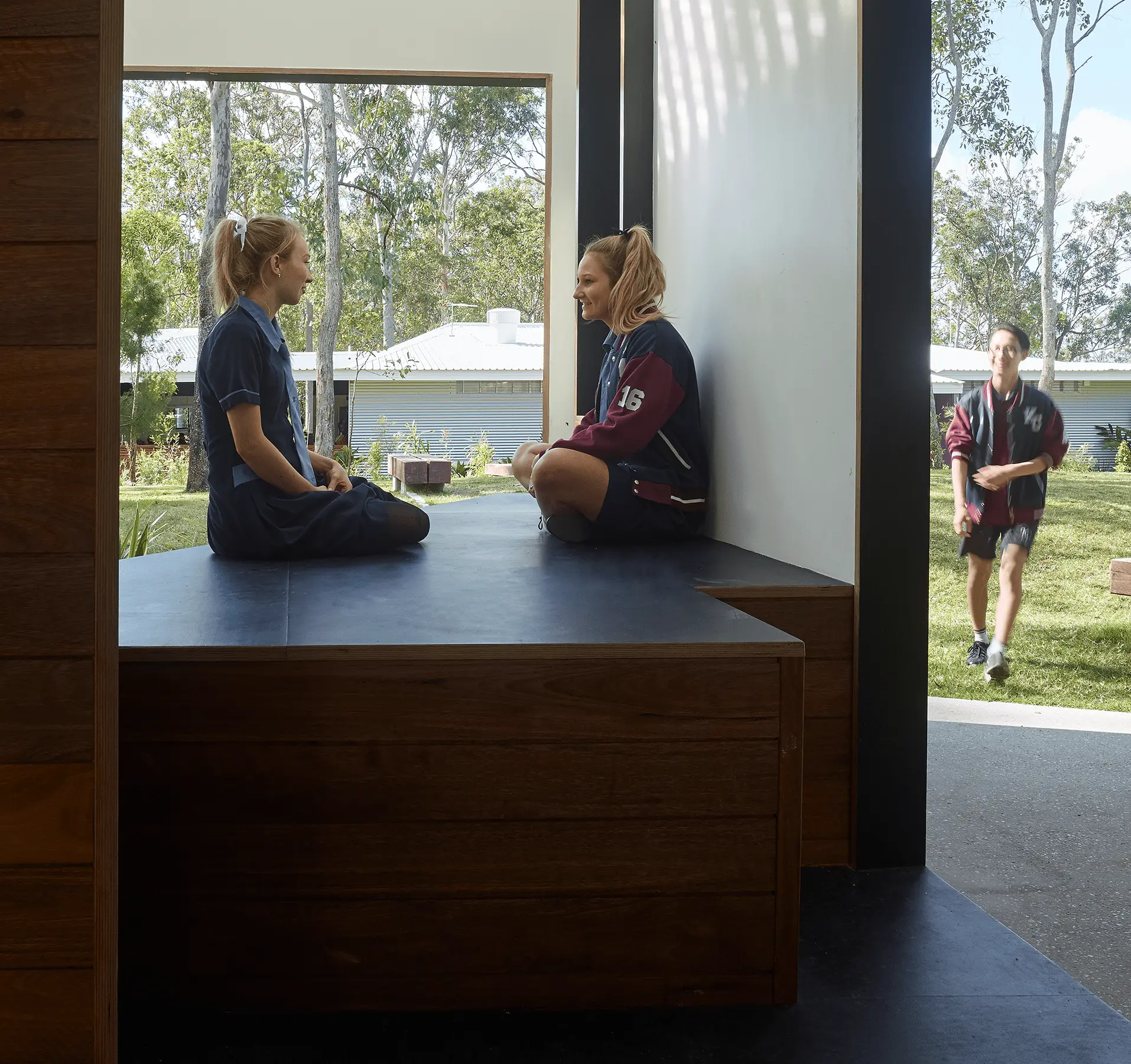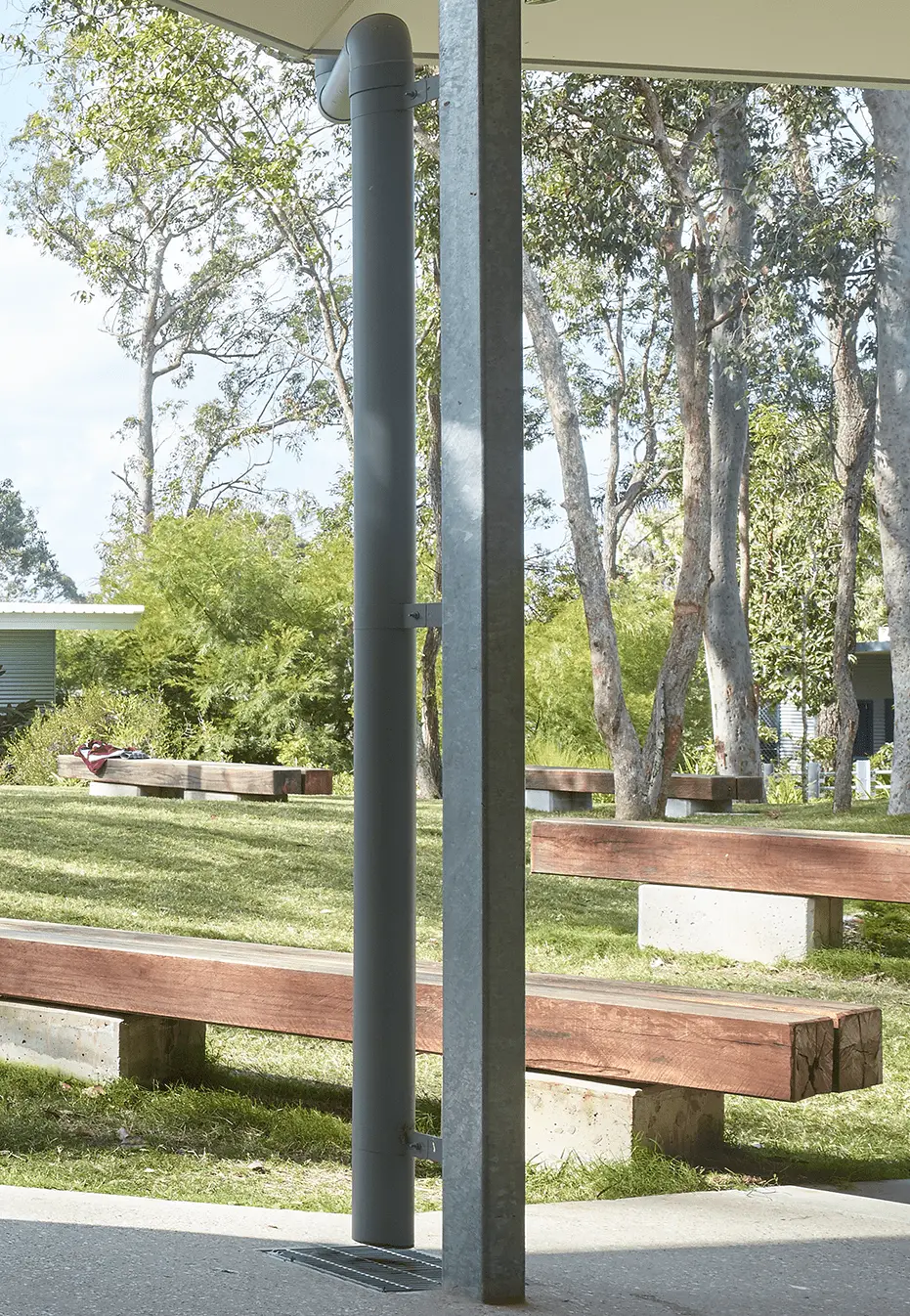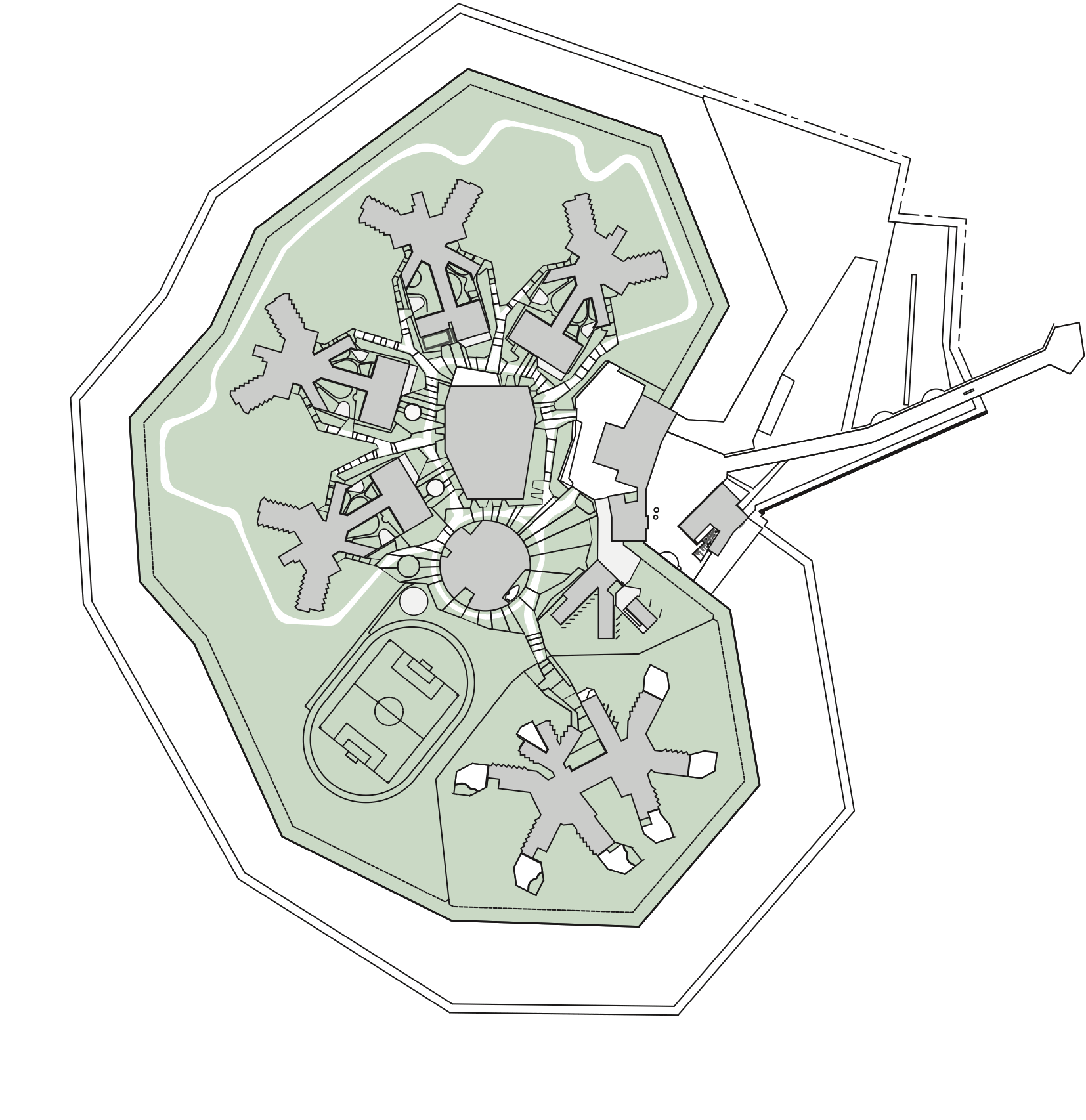











Kimberley College Art and Library Precinct
Following on from the successful design and construction of the Kimberley College Flexible Learning Area, Guymer Bailey Architects and Landscape were commissioned to design the new Kimberley College Art and Library Precinct.
The library includes a tiered reading nook, shelving space for books and a range of flexible teaching spaces. It also incorporates an auditorium that can extend to provide flexibility in use and seating. The art building includes flexible indoor and outdoor teaching spaces, wet and dry areas, a computer lab for computer-aided design, storage spaces and a kiln covered in burnt timber cladding. Connecting the library and art precinct is the ‘chill spot’, a fun area that gives art students a blank canvas each year to populate and paint as a tradition of the art school.
With sustainability playing a significant role in the design, the landscaping includes a beautiful green vine trellis to reduce heat and a native vegetated dry creek bed to capture and filter the overland flow. Recycled hardwood was used for bench seats, and an ephemeral pond has been set up outside the large feature window of the library to educate students on what happens to water after it rains.
Stage A works included the refurbishment and extension of an existing two-storey classroom block as well as the construction of a new covered walkway through the centre of the school.
PROCESS
The library includes a tiered reading nook, shelving space for books and a range of flexible teaching spaces. It also incorporates an auditorium that can extend to provide flexibility in use and seating. The art building includes flexible indoor and outdoor teaching spaces, wet and dry areas, a computer lab for computer-aided design, storage spaces and a kiln covered in burnt timber cladding. Connecting the library and art precinct is the ‘chill spot’, a fun area that gives art students a blank canvas each year to populate and paint as a tradition of the art school.
METHODOLOGY
With sustainability playing a significant role in the design, the landscaping includes a beautiful green vine trellis to reduce heat and a native vegetated dry creek bed to capture and filter the overland flow. Recycled hardwood was used for bench seats, and an ephemeral pond has been set up outside the large feature window of the library to educate students on what happens to water after it rains.
TRADITIONAL CUSTODIANS OF THE LAND
The Yuggera People
COMPLETION
2016
LOCATION
Carbrook, Queensland
CLIENT
Kimberley College
PROJECT CONTACT
PHOTOGRAPHY
Guymer Bailey Architects
VALUE OUTCOMES
“GB-A were an absolute pleasure to work with. The team on site and in the office never cut corners and were committed to delivering a very high quality project.”
Jim Spainard, Golburn Enterprise


Designing for a sustainable future is a core part of our organisational philosophy. Drawing on the knowledge from our Greenstar accredited team members and specialist consultants in environmentally sustainable design, we ensure our project teams integrate creativity with scientific rigour, to create designs that are conscientious of the natural environment and local ecology. Designing for a sustainable future is a core part of our organisational philosophy.
PRINCIPLES OF PASSION
During the design process, our project team not only considers the physical context of the designs but also examines the social and cultural context. Through every design, we look for ways to inspire positive attitudes, behaviours and emotional responses in people to encourage the responsible use of resources, increase cooperation among occupants, and communicate the values of society and cultural diversity.
Designing for a sustainable future is a core part of our organisational philosophy. Drawing on the knowledge from our Greenstar accredited team members and specialist consultants in environmentally sustainable design, we ensure our project teams integrate creativity with scientific rigour, to create designs that are conscientious of the natural environment and local ecology.


We design built environments from a holistic, sustainable perspective: each project reconciles ecological and social impacts within the current economic climate. We holistically evaluate environmental, cultural and financial sustainability in every task we undertake.
